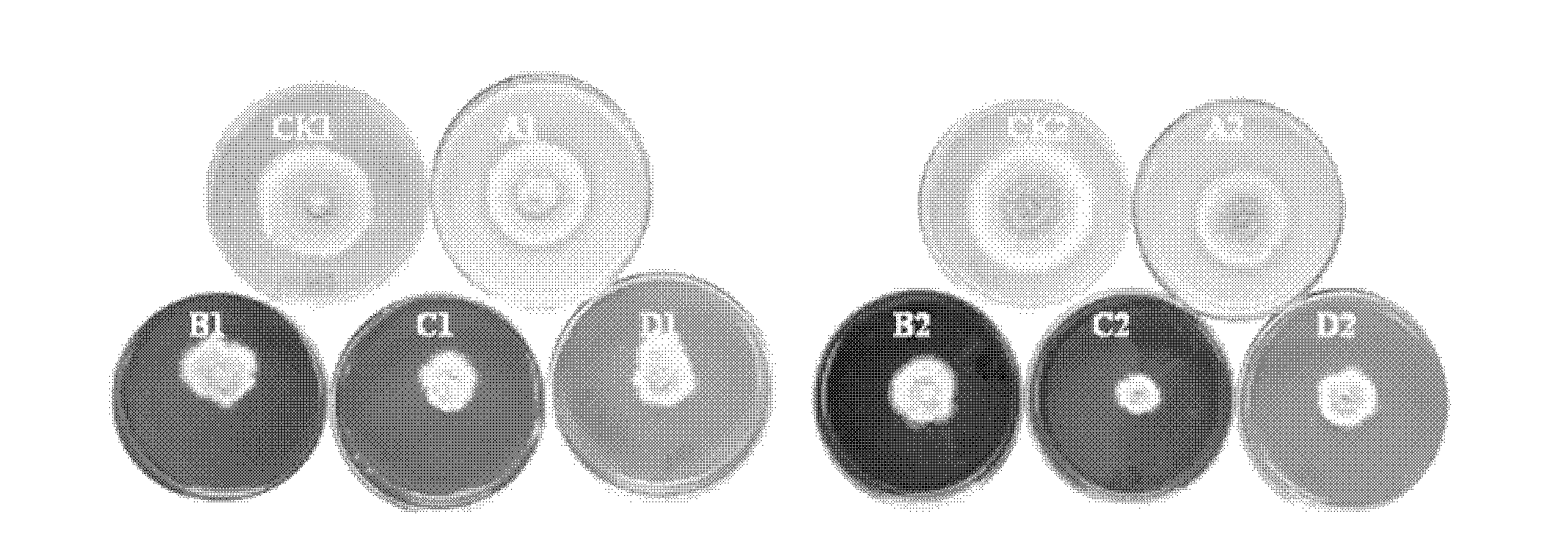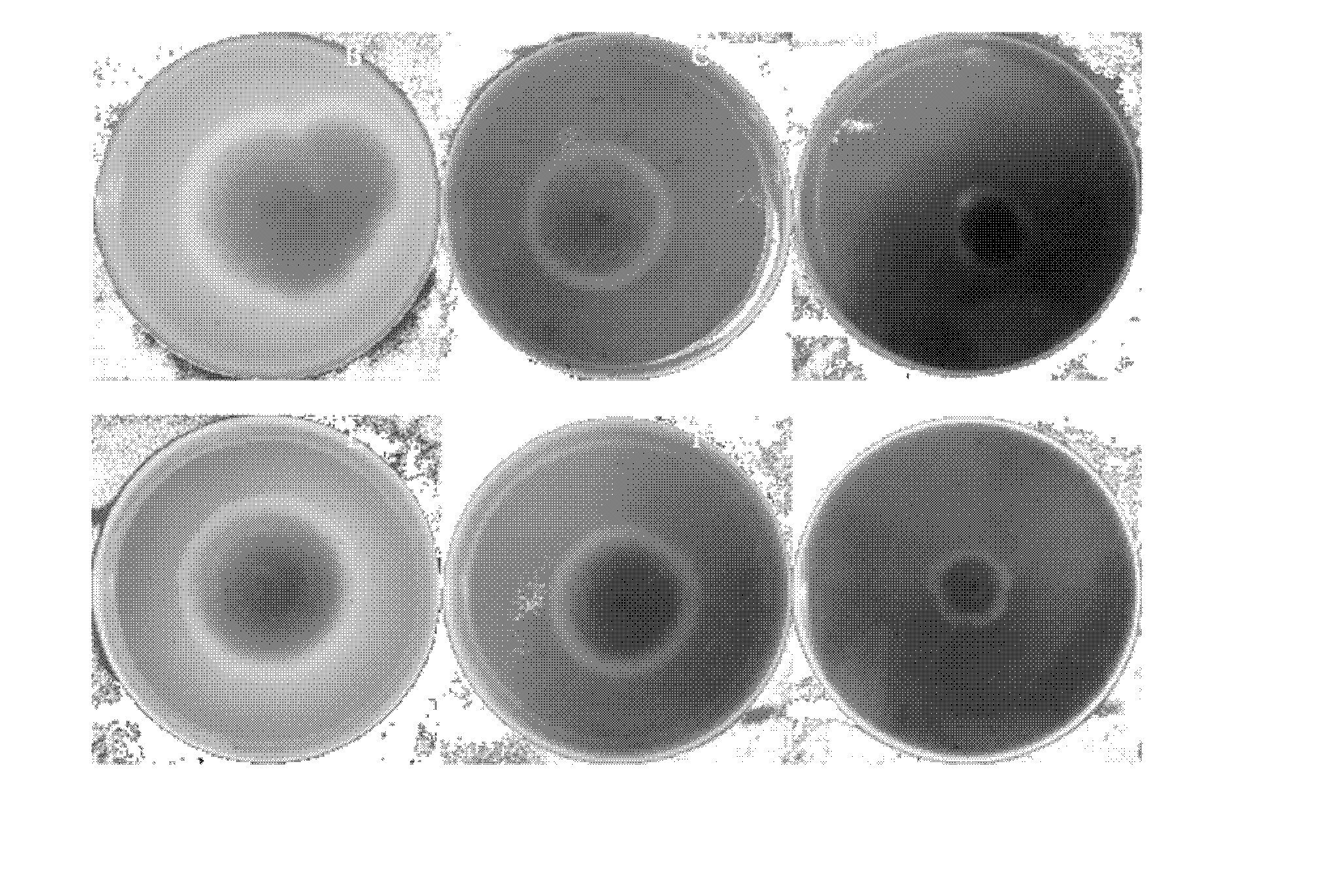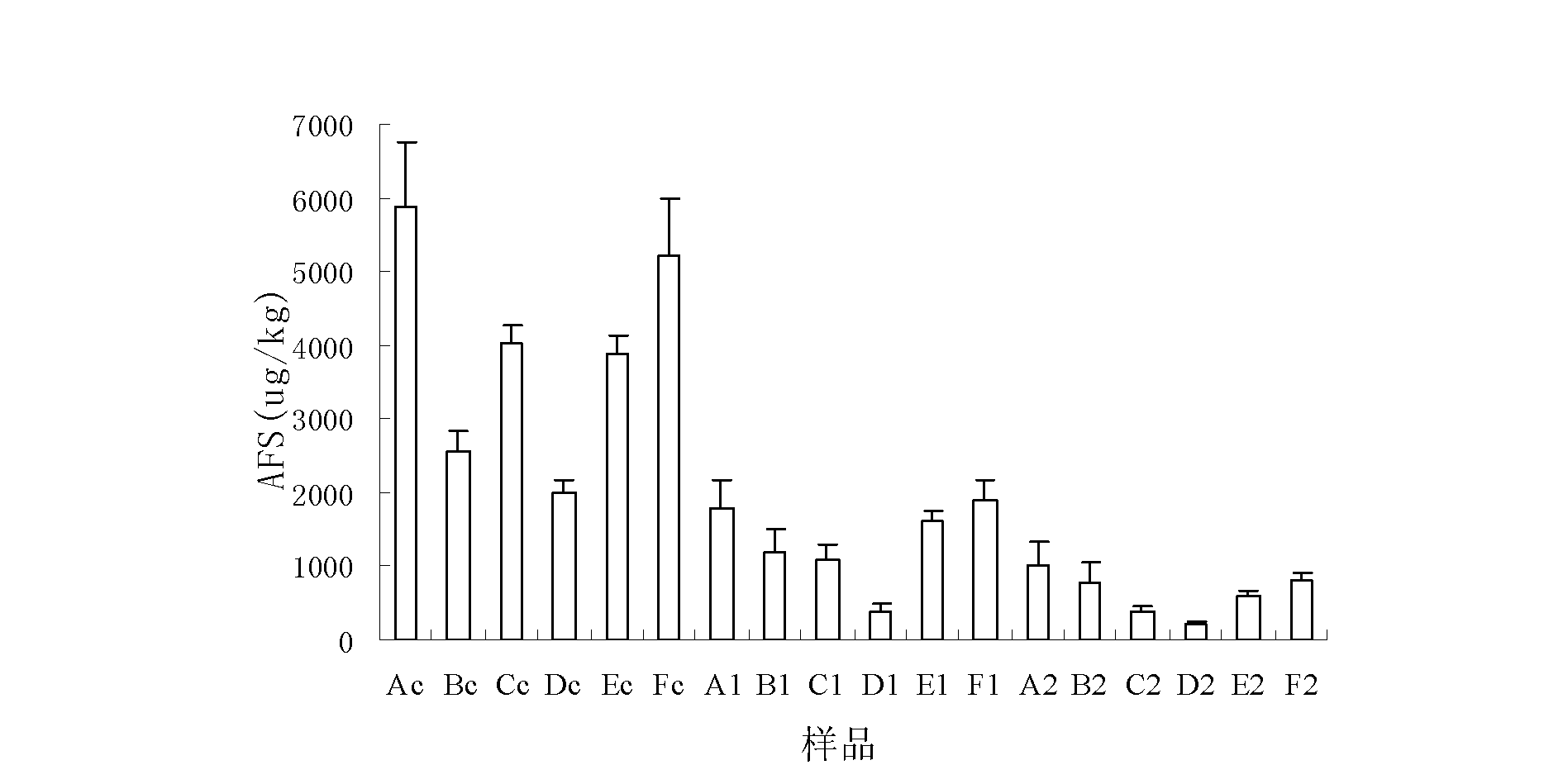Application of tea extract product in biological prevention and control of aflatoxin
A technology of tea extract and aflatoxin, applied in application, food science, food preservation and other directions, can solve the problems of application limitation, poor lasting effect, etc., and achieve the effect of high safety, not easy to environmental change, and good application prospect.
- Summary
- Abstract
- Description
- Claims
- Application Information
AI Technical Summary
Problems solved by technology
Method used
Image
Examples
Embodiment 1
[0025] Through the plate antibacterial experiment, the tea extracts were tested against Aspergillus flavus As3.4408 (China Microbial Culture Collection, the current number is CGMCC3.4408) and Aspergillus parasiticus As3.124 (China Microbial Culture Collection, the current number is CGMCC3 .124) Growth inhibition effect, the experimental research process is as follows:
[0026] (1) Preparation of tea extract: 500g each of green tea, oolong tea, black tea and dark tea were soaked in 5L boiling water for 20 minutes, then filtered, the filtrate was concentrated to remove 2 / 3 of the water, and then the remaining water was sublimated by freeze drying 4 kinds of tea water extracts.
[0027] (2) Preparation of PDA solid medium containing tea extract: Weigh 4 kinds of tea water extracts and dissolve them in distilled water to prepare a solution, of which 1g of green tea extract is dissolved in 1L of distilled water to obtain the concentration of green tea extract: In a 0.1% (m / v) solution,...
Embodiment 2
[0041] The experimental study on the inhibitory effect of green tea extract on the biosynthesis of aflatoxin in several agricultural products was carried out by inoculating Aspergillus flavus As3.4408 to peanuts, rice, soybeans, walnut kernels, almonds, and corn seeds to study the water soaking of green tea The effect of the extract on several agricultural products in inhibiting the biosynthesis of aflatoxin during the storage period.
[0042] The experimental method is as follows:
[0043] (1) Experimental materials and reagents:
[0044] Commercially available peanuts, rice, soybeans, walnut kernels, almonds and corn each 1kg;
[0045] Aflatoxin-producing strain: Aspergillus flavus AS3.4408 (now preserved in the China Collection of Microorganisms, the current number is CGMCC3.4408)
[0046] Green tea water extract (the preparation method is as described above);
[0047] (2) Inoculation and cultivation:
[0048] 1) Strain activation: the Aspergillus flavus AS3.4408 strain was inoculated...
Embodiment 3
[0056] The experimental study on the inhibitory effect of black tea extract on the biosynthesis of aflatoxin in several agricultural products was carried out by inoculating Aspergillus parasitica As3.124 (now stored in the China Microbial Culture Collection, the current number is CGMCC3.124) On peanuts, rice, soybeans, walnut kernels, almonds, and corn seeds, the effect of black tea water extract on inhibiting aflatoxin biosynthesis during storage of several agricultural products was studied.
[0057] The materials, reagents and methods are the same as in Example 1, except that the black tea water extract is used instead of the green tea water extract (the extraction method is also the same), and another toxin-producing Aspergillus flavus strain Aspergillus parasiticus AS3.124 is used for the experiment. The effect of tea extract on the biosynthesis of aflatoxins by Aspergillus parasitica AS3.124 in different agricultural products.
[0058] See the results of the experiment Figure...
PUM
 Login to View More
Login to View More Abstract
Description
Claims
Application Information
 Login to View More
Login to View More - R&D
- Intellectual Property
- Life Sciences
- Materials
- Tech Scout
- Unparalleled Data Quality
- Higher Quality Content
- 60% Fewer Hallucinations
Browse by: Latest US Patents, China's latest patents, Technical Efficacy Thesaurus, Application Domain, Technology Topic, Popular Technical Reports.
© 2025 PatSnap. All rights reserved.Legal|Privacy policy|Modern Slavery Act Transparency Statement|Sitemap|About US| Contact US: help@patsnap.com



